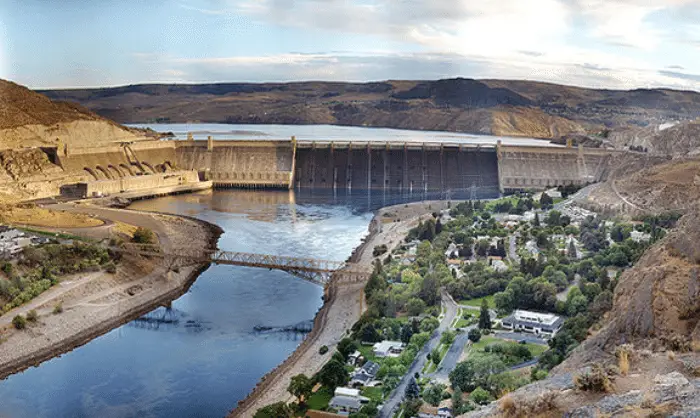The governments of Kenya and the United Kingdom have signed an agreement for the development of the proposed High grand falls dam in Kenya.
President William Ruto and UK Prime Minister Rishi Sunak signed the agreement on behalf of their respective governments. The signing ceremony took place on the sidelines of the climate conference COP27 underway in Egypt.
According to the new agreement, the dam which is also known as the High grand falls hydroelectric power station will be developed at a cost of Sh425 billion. This is an approximately Sh205 billion rise from the initial cost estimate. Initially, the dam was estimated to cost about Sh220 billion ($2 billion).
Led by UK engineering firm GBM, the High grand falls dam project will reportedly be established on a public-private partnership basis. The UK says it will take time to be completed because of its complexity. Upon completion, the development will be Kenya’s second expensive infrastructure project after the standard gauge railway.
The High Grand Falls dam is envisaged to include both a power purchase agreement for clean energy and a water purchase agreement for agricultural irrigation. It will irrigate about 400,000 hectares and generate 1,000MW of electricity.
High Grand Falls Dam Project Overview
The High Grand Falls Hydroelectric Power Station, also known as the High Grand Falls Dam is a planned hydroelectric power station in Kenya. The dam is set to be built across the Tana River, in the vicinity of Mwingi National Reserve. This location is at the border between Kitui County and Tharaka-Nithi County, approximately 280 kilometers northeast of Nairobi city.
Also Read: Thwake Multi-purpose Dam project timeline and all you need to know
The project will be developed in phases the first of which will come online in 2031. The second phase, on the other hand, is expected online in 2032. Upon completion, the High Grand Falls Dam will create a lake with a surface area of 165 square kilometers. The lake will be capable of holding 5,600,000,000 cubic meters of water. The dam will harness the energy of the Kibuka Falls to produce up to 1000MW of electricity.
Reported earlier
Feb 2017
Plans set for the construction of High Grand Falls dam in Kenya
The government is set to build the US $ 1.4 billion High Grand Falls dam at Kibuka falls, River Tana in Tharaka constituency within the next six years. This is predicted to boost the capacity of the Galana irrigation project to aid end food scarcity in the nation.
Also read: Kenya mulls constructing 20 dams in Mount Kenya region
David Gikaria, vice chairman of the Parliamentary Committee on Implementation, said the project will also profit Mwiku coal basin project. The Nakuru Town East MP said the dam will cut across Tharaka Nithi, Embu, and Kitui counties; he insistently blamed the setbacks on puffed-up figures on planned compensation of affected locals.
Also read: Dam in Kenya to be constructed with World Bank support
“The Attorney General came up with a law to tackle the crazy figures in the compensation format. This will get rid of cartels who want to buy land so as to collect from the payout,” he said. He said at least 4,500 homes in the three counties will be displaced when the project begins.
“This has brought some political concerns as politicians do not want their people moved to other counties. “Gikaria said. He said the Tana River Development Authority (TARDA) has appealed to the parliament for finances to carry out public awareness on the project.
“The government has acknowledged Akro Power, an investor who is all set to push US $ 1.4 billion and another US 57.9 million for compensation under a build-operate-transfer design,” Gikaria said.
An overview of the High Grand Falls dam
The dam will occupy about 5.6 billion cubic meters of water for irrigating more than 250,000 hectares of land and will also produce more than 700 megawatts of electricity.
It is part of Vision the 2030s Sh1.5 trillion Lamu Southern Sudan-Ethiopia Transport Corridor (Lapsset) projects.
Also read: National Irrigation Board in Kenya plans to construct US$ 160m dam
The legislator said the project should have been accomplished in 1998 but has been experiencing delays just like other mega projects that took a long before they were realized.
“We seem to have issues with these mega projects in this nation. The standard gauge railway was to start in 1975. Thika super highway was to be constructed as early as the 1970s. We trust this one will soon be finished,” the MP said, adding that the project’s viability study will be assessed.

